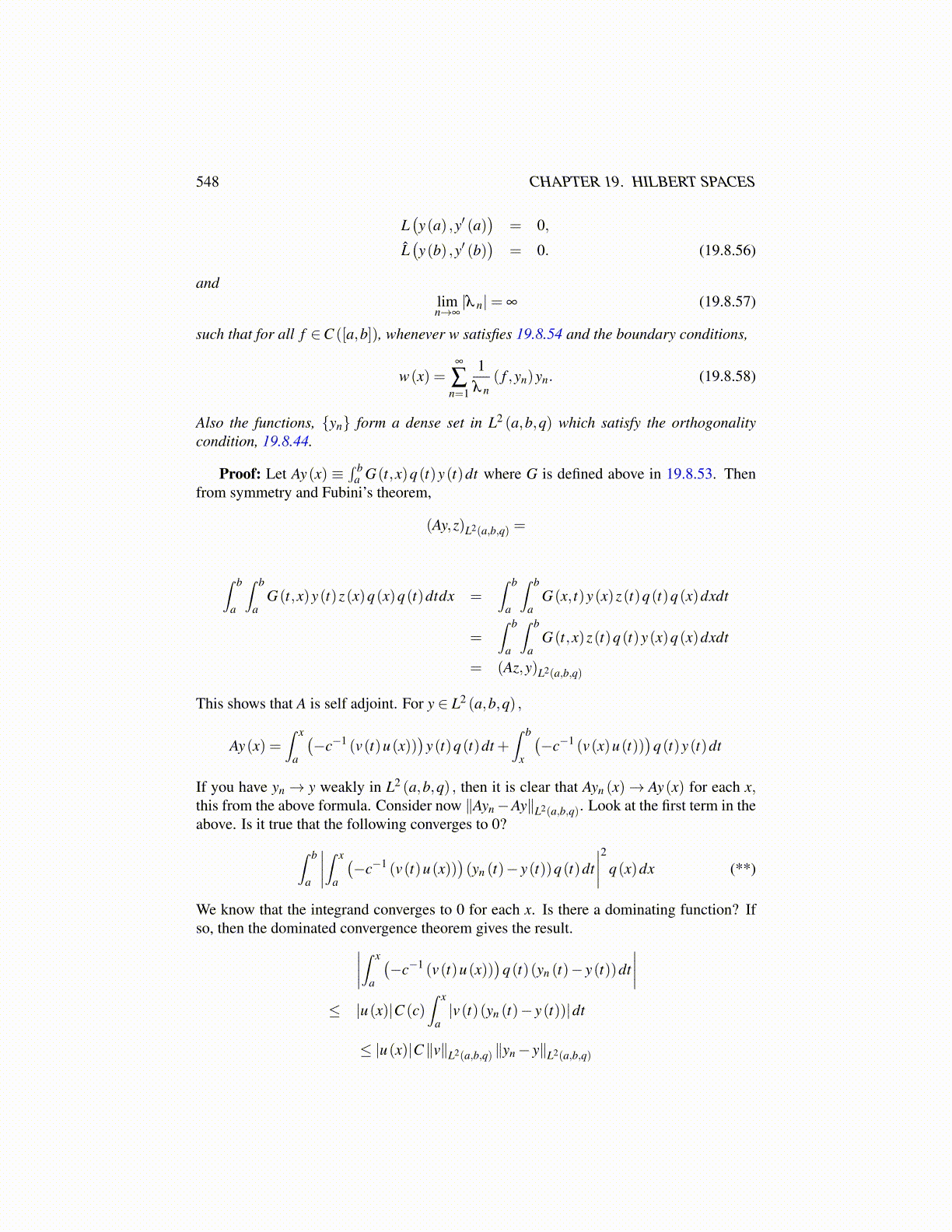
548 CHAPTER 19. HILBERT SPACES
L(y(a) ,y′ (a)
)= 0,
L̂(y(b) ,y′ (b)
)= 0. (19.8.56)
andlimn→∞|λ n|= ∞ (19.8.57)
such that for all f ∈C ([a,b]), whenever w satisfies 19.8.54 and the boundary conditions,
w(x) =∞
∑n=1
1λ n
( f ,yn)yn. (19.8.58)
Also the functions, {yn} form a dense set in L2 (a,b,q) which satisfy the orthogonalitycondition, 19.8.44.
Proof: Let Ay(x) ≡∫ b
a G(t,x)q(t)y(t)dt where G is defined above in 19.8.53. Thenfrom symmetry and Fubini’s theorem,
(Ay,z)L2(a,b,q) =
∫ b
a
∫ b
aG(t,x)y(t)z(x)q(x)q(t)dtdx =
∫ b
a
∫ b
aG(x, t)y(x)z(t)q(t)q(x)dxdt
=∫ b
a
∫ b
aG(t,x)z(t)q(t)y(x)q(x)dxdt
= (Az,y)L2(a,b,q)
This shows that A is self adjoint. For y ∈ L2 (a,b,q) ,
Ay(x) =∫ x
a
(−c−1 (v(t)u(x))
)y(t)q(t)dt +
∫ b
x
(−c−1 (v(x)u(t))
)q(t)y(t)dt
If you have yn → y weakly in L2 (a,b,q) , then it is clear that Ayn (x)→ Ay(x) for each x,this from the above formula. Consider now ∥Ayn−Ay∥L2(a,b,q). Look at the first term in theabove. Is it true that the following converges to 0?∫ b
a
∣∣∣∣∫ x
a
(−c−1 (v(t)u(x))
)(yn (t)− y(t))q(t)dt
∣∣∣∣2 q(x)dx (**)
We know that the integrand converges to 0 for each x. Is there a dominating function? Ifso, then the dominated convergence theorem gives the result.∣∣∣∣∫ x
a
(−c−1 (v(t)u(x))
)q(t)(yn (t)− y(t))dt
∣∣∣∣≤ |u(x)|C (c)
∫ x
a|v(t)(yn (t)− y(t))|dt
≤ |u(x)|C∥v∥L2(a,b,q) ∥yn− y∥L2(a,b,q)